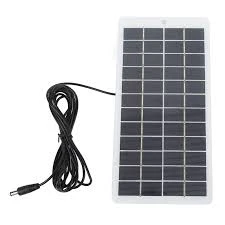solar panel cost per square meter
Understanding Solar Panel Costs Per Square Meter
As the world continues to seek sustainable energy solutions, solar energy has emerged as a frontrunner. The cost of solar panels per square meter is a critical factor for homeowners and businesses considering the transition to renewable energy. Understanding these costs is essential for making informed decisions about solar investments.
The cost of solar panels can vary significantly based on several factors, including the type of solar technology, market conditions, installation practices, and geographical location. On average, the price of solar panels per square meter ranges from $100 to $300. This range typically includes the panels themselves, necessary mounting hardware, and sometimes the inverter, which converts the collected solar energy into usable electricity.
Types of Solar Panels
There are primarily three types of solar panels monocrystalline, polycrystalline, and thin-film. Monocrystalline panels are made from a single crystal structure and tend to be more efficient but also more expensive, often around $200 to $300 per square meter. Polycrystalline panels, made from multiple crystal structures, are generally less efficient but cheaper, falling in the range of $100 to $200 per square meter. Thin-film panels are the least efficient but can be more flexible in terms of installation and may cost around $100 per square meter.
Installation Costs
solar panel cost per square meter

While the cost of the panels is a significant factor, one must also consider installation costs. Installation can add anywhere from $50 to $200 per square meter, depending on the complexity of the roof, the mounting system, and local labor rates. Installation involves not just placing the panels but also ensuring they are securely mounted, wired correctly, and comply with local regulations. Therefore, potential solar investors should factor in both the panel costs and installation expenses when budgeting for their solar projects.
Geographical Influences
Location plays a critical role in the overall cost of solar panels. Areas with higher sunlight exposure may provide a better return on investment, as they can generate more electricity. However, regulatory differences, available incentives, and local competition can also affect the costs significantly. For example, states with strong solar incentives like California or New York may see higher installation activity, potentially lowering costs due to competitive pricing among installers.
Incentives and Long-term Savings
One of the most significant benefits of solar energy is the potential for long-term savings on energy bills. Many regions offer incentives such as tax credits, rebates, or feed-in tariffs that can significantly reduce the upfront costs of solar panel systems. Homeowners and businesses should research available incentives in their area to determine how much they can save, which can make the initial investment more appealing.
In conclusion, the cost of solar panels per square meter varies due to several influencing factors, including technology, installation, geographical location, and available incentives. By analyzing these variables, consumers can make informed decisions and find the best solar solutions for their energy needs. As the demand for sustainable energy continues to grow, solar technology will likely become even more affordable and accessible, paving the way for a cleaner, greener future.
-
Understanding the Advantages of Solar String Inverters for Your Energy SystemNewsApr.29,2025
-
Choosing the Right PV Inverter: A Comprehensive GuideNewsApr.29,2025
-
The Future of Solar Power: Exploring Bifacial Solar PanelsNewsApr.29,2025
-
The Complete Guide to Solar Panels: Efficiency, Cost, And InstallationNewsApr.29,2025
-
The Best Options for Efficiency and Cost-EffectivenessNewsApr.29,2025
-
Harnessing the Power of Off-Grid Solar Inverters for Energy IndependenceNewsApr.29,2025







